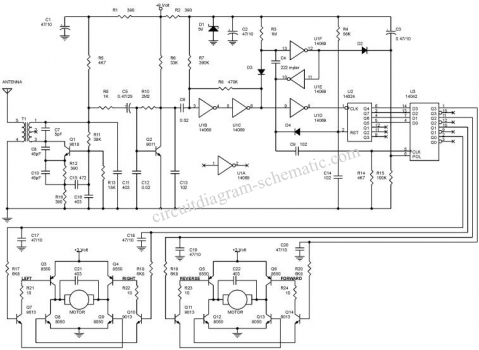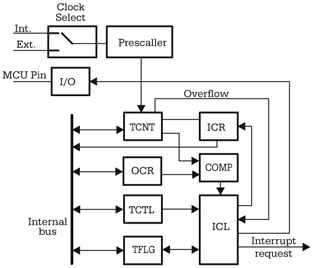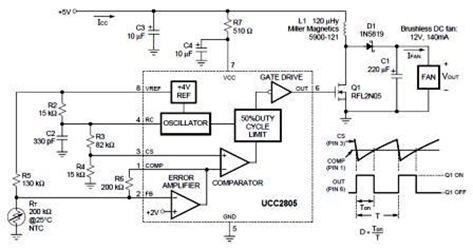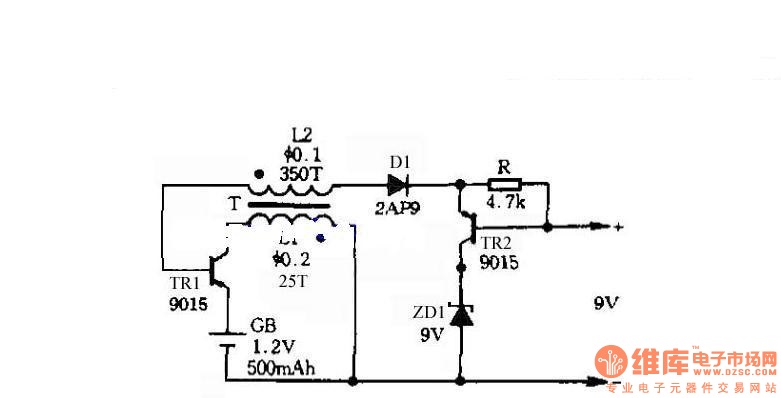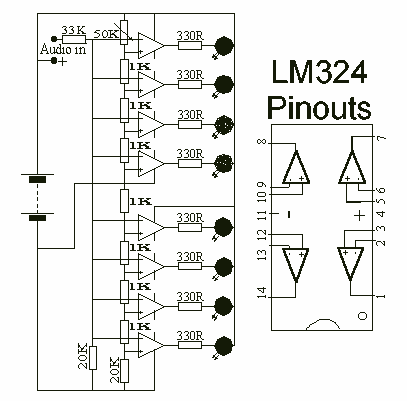
Digital LED Voltmeter Using ICL7107
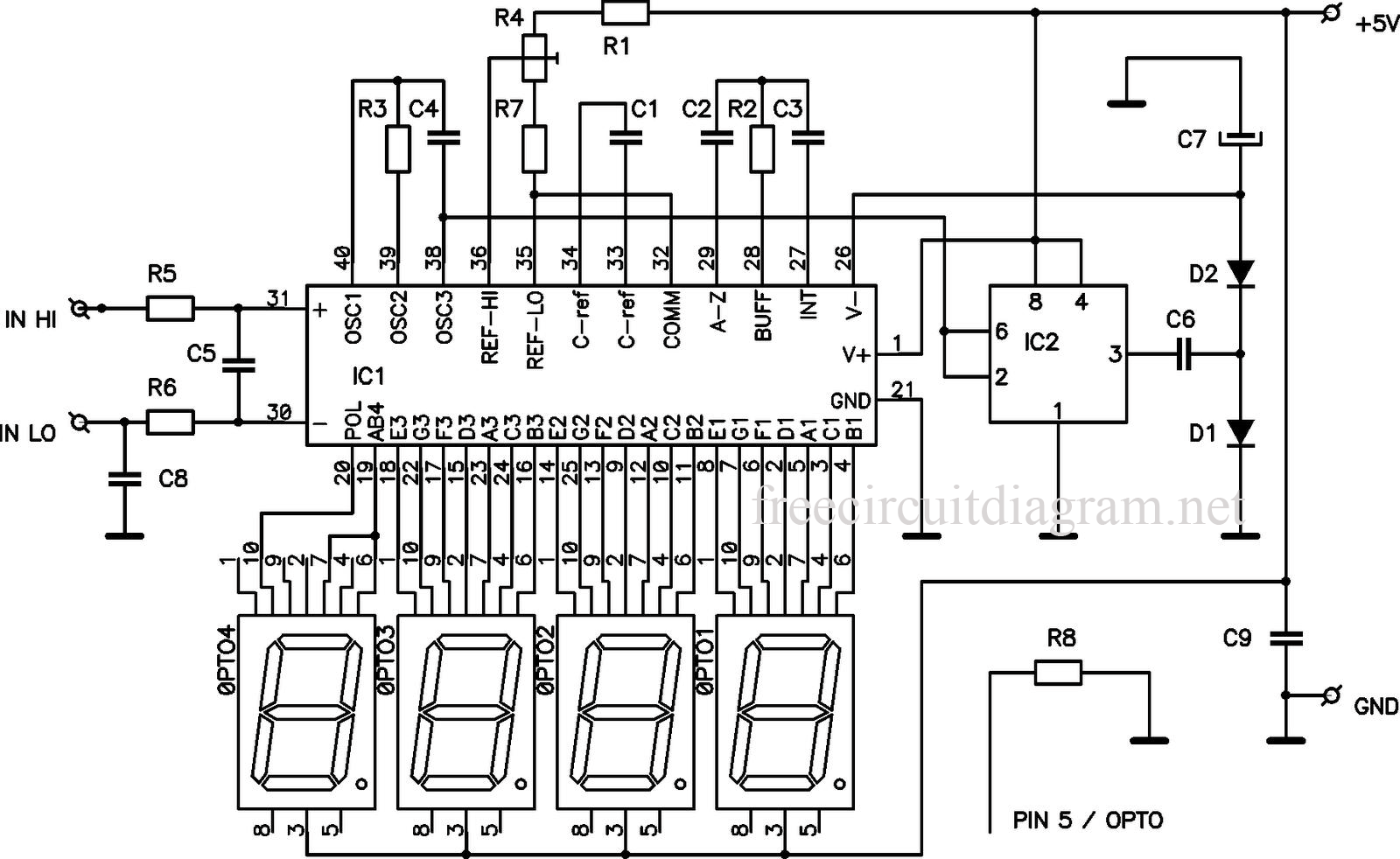
This circuit is a digital voltmeter diagram featuring an LED display. It is designed for measuring the output voltage of a DC power supply. The voltmeter incorporates a 3.5-digit LED display along with a negative voltage indicator. It is capable of measuring DC voltages ranging from 0 to 199.9V with a resolution of 0.1V. The circuit utilizes a single ICL7107 chip and can be accommodated on a compact printed circuit board measuring 3cm x 7cm. It requires a 5V power supply and operates with a current draw of approximately 25mA.
The digital voltmeter circuit operates primarily through the ICL7107 integrated circuit, which serves as the core of the measurement system. This chip is designed to convert the analog voltage input into a digital format that can be displayed on the LED screen. The ICL7107 features an internal reference voltage, which ensures accurate measurements across the specified range.
The circuit is structured to accept a DC input voltage, which is fed into the ICL7107. The input voltage is scaled down using a voltage divider network, if necessary, to ensure that it remains within the acceptable input range of the chip. This scaling is crucial for preventing damage to the ICL7107 and ensuring accurate readings. The negative voltage indicator is typically achieved through additional circuitry that can detect and display negative voltages, enhancing the versatility of the voltmeter.
The LED display consists of 3.5 digits, allowing for clear visual representation of the measured voltage. The design is optimized for low power consumption, with the entire circuit operating on a 5V supply and drawing only about 25mA. This makes it suitable for portable applications or systems where power efficiency is a priority.
The compact size of the printed circuit board, measuring 3cm x 7cm, allows for easy integration into various electronic projects or devices. The layout of the PCB must be carefully considered to minimize noise and interference, which could affect the accuracy of the voltage measurements. Proper grounding and routing techniques are essential in the design of the PCB to ensure reliable operation.
Overall, this digital voltmeter circuit is an efficient and effective solution for measuring DC voltage, with a user-friendly interface and a compact form factor, making it suitable for a wide range of applications in electronic testing and development.This circuit is a circuit diagram digital voltmeter with LED display. It`s ideal to use for measuring the output voltage of your DC power supply. It includes a 3.5-digit LED display with a negative voltage indicator. It measures DC voltages from 0 to 199.9V with a resolution of 0.1V. The voltmeter is based on single ICL7107 chip and may be fitted on a small 3cm x 7cm printed circuit board. The circuit should be supplied with a 5V voltage supply and consumes only around 25mA 🔗 External reference
The digital voltmeter circuit operates primarily through the ICL7107 integrated circuit, which serves as the core of the measurement system. This chip is designed to convert the analog voltage input into a digital format that can be displayed on the LED screen. The ICL7107 features an internal reference voltage, which ensures accurate measurements across the specified range.
The circuit is structured to accept a DC input voltage, which is fed into the ICL7107. The input voltage is scaled down using a voltage divider network, if necessary, to ensure that it remains within the acceptable input range of the chip. This scaling is crucial for preventing damage to the ICL7107 and ensuring accurate readings. The negative voltage indicator is typically achieved through additional circuitry that can detect and display negative voltages, enhancing the versatility of the voltmeter.
The LED display consists of 3.5 digits, allowing for clear visual representation of the measured voltage. The design is optimized for low power consumption, with the entire circuit operating on a 5V supply and drawing only about 25mA. This makes it suitable for portable applications or systems where power efficiency is a priority.
The compact size of the printed circuit board, measuring 3cm x 7cm, allows for easy integration into various electronic projects or devices. The layout of the PCB must be carefully considered to minimize noise and interference, which could affect the accuracy of the voltage measurements. Proper grounding and routing techniques are essential in the design of the PCB to ensure reliable operation.
Overall, this digital voltmeter circuit is an efficient and effective solution for measuring DC voltage, with a user-friendly interface and a compact form factor, making it suitable for a wide range of applications in electronic testing and development.This circuit is a circuit diagram digital voltmeter with LED display. It`s ideal to use for measuring the output voltage of your DC power supply. It includes a 3.5-digit LED display with a negative voltage indicator. It measures DC voltages from 0 to 199.9V with a resolution of 0.1V. The voltmeter is based on single ICL7107 chip and may be fitted on a small 3cm x 7cm printed circuit board. The circuit should be supplied with a 5V voltage supply and consumes only around 25mA 🔗 External reference
